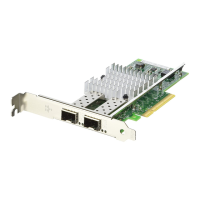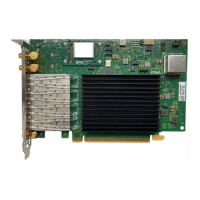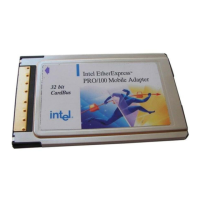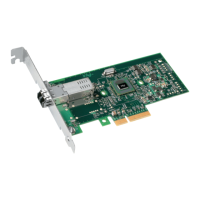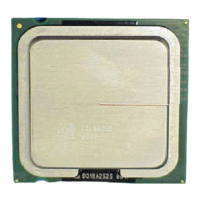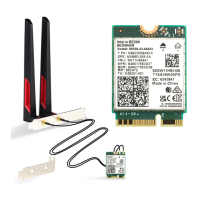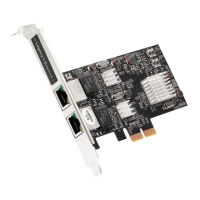Parameter Name Valid
Range/Settings
Default Description
0 - 15 VFs = Up to 8 traffic classes, depending
on device support
16 - 31 VFs = Up to 4 traffic classes
32 - 63 = 1 traffic class
When VFs are configured, the PF is allocated one pool as well.
The PF supports the DCB features with the constraint that each
traffic class will only use a single queue pair. When zero VFs
are configured, the PF can support multiple queue pairs per
traffic class.
VMDQ 1-16 1 (dis-
abled)
This provides the option for turning VMDQ on or off.
Values 2 through 16 enable VMDQ with the descriptor queues
set to the specified value.
L2LBen 0-1 1
(enabled)
This parameter controls the internal switch (L2 loopback
between pf and vf). By default the switch is enabled.
Additional Configurations
Configuring the Driver on Different Distributions
Configuring a network driver to load properly when the system is started is distribution dependent. Typically, the con-
figuration process involves adding an alias line to /etc/modules.conf or /etc/modprobe.conf as well as editing other sys-
tem startup scripts and/or configuration files. Many Linux distributions ship with tools to make these changes for you. To
learn the proper way to configure a network device for your system, refer to your distribution documentation. If during
this process you are asked for the driver or module name, the name for the Linux Base Driver for the Intel® 10 Gigabit
PCI Express Family of Adapters is ixgbe.
Viewing Link Messages
Link messages will not be displayed to the console if the distribution is restricting system messages. In order to see net-
work driver link messages on your console, set dmesg to eight by entering the following:
dmesg -n 8
NOTE: This setting is not saved across reboots.
Jumbo Frames
Jumbo Frames support is enabled by changing the MTU to a value larger than the default of 1500 bytes. The maximum
value for the MTU is 9710. Use the ifconfig command to increase the MTU size. For example, enter the following where
<x> is the interface number:
ifconfig ethx mtu 9000 up
This setting is not saved across reboots. The setting change can be made permanent by adding MTU = 9000 to the file
/etc/sysconfig/network-scripts/ifcfg-eth<x> for RHEL or to the file /etc/sysconfig/network/<config_
file> for SLES.
The maximum MTU setting for Jumbo Frames is 9710. This value coincides with the maximum Jumbo Frames size of
9728. This driver will attempt to use multiple page sized buffers to receive each jumbo packet. This should help to
avoid buffer starvation issues when allocating receive packets.
For 82599-based network connections, if you are enabling jumbo frames in a virtual function (VF), jumbo frames must
first be enabled in the physical function (PF). The VF MTU setting cannot be larger than the PF MTU.

